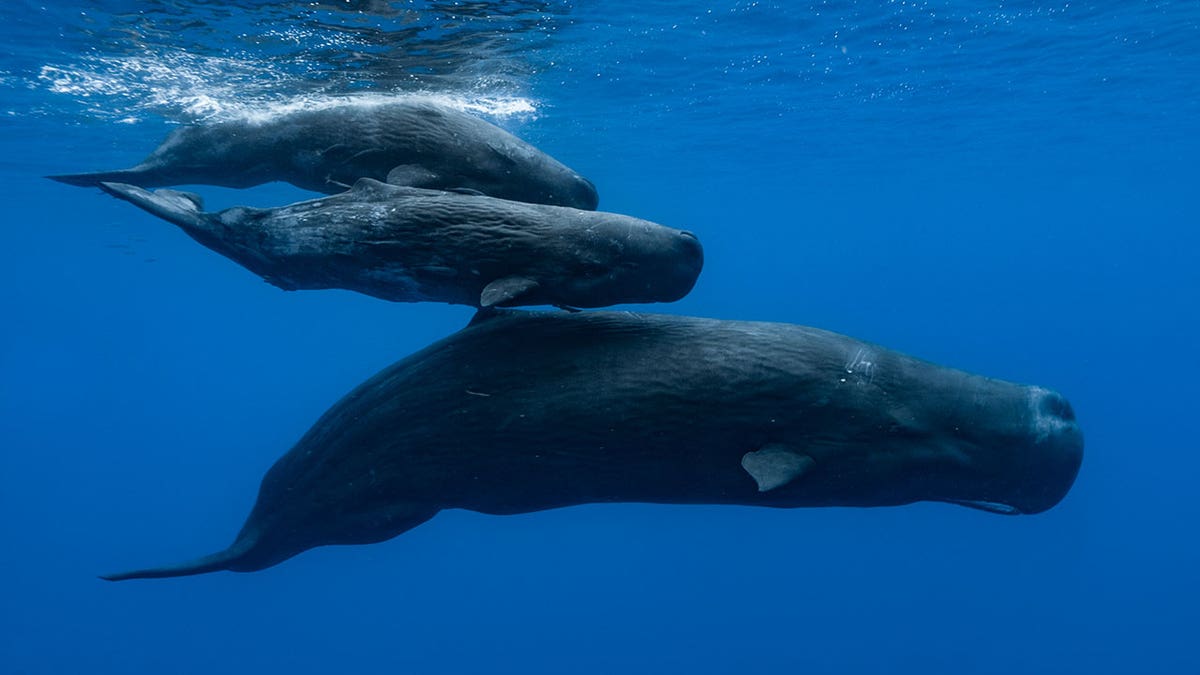Massive whale shark spotted slurping up fish in Hawaiian waters
A rarely seen 30-foot whale shark was caught on video catching a funnel of fish in "its massive mouth" off Oahu’s Kaneʻohe Bay. See this whale shark up close!
- A whale died after straying into Japan's Osaka Bay last month, officials confirmed.
- Some experts noted the structure of Osaka Bay, which has many narrow passages, may make it difficult for stray whales to go back to the sea.
- The whale will be buried underground for a few years until it becomes a skeleton, which will then be donated to a local natural museum.
A whale as long as a train car that died after straying into a port in Osaka last month is set to be buried until it naturally becomes a skeletal specimen for a local museum.
It's the third year in a row that whales have become stranded in the area, raising questions about the reasons why and the cost of handling the incidents.
The animal is believed to be a male sperm whale, about 39 feet long and weighing an estimated 20 tons, and was earlier spotted in the Sakai Semboku Port in mid-January.
It had since been spotted in a number of locations in Osaka Bay, until Sunday, when a boat captain reported to the coast guard that the whale was not breathing. Prefectural officials and experts took a boat out to check on the whale and confirmed its death on Monday, presumably due to starvation.

An adult sperm whale and two young ones are seen swimming in the Indian Ocean. A sperm whale as long as a train car that died after straying into a port in Osaka last month is set to be buried until it naturally becomes a skeletal specimen for a local museum. (Alexis Rosenfeld/Getty Images)
Osaka officials have decided to bury the dead whale at a section of a nearby industrial waste disposal complex after cetacean experts carried out an autopsy, collecting samples to determine the cause of the whale’s death, prefectural environmental department official Toshihiro Yamawaki said.
Television footage showed the dead whale being carefully lifted by a crane and transported to the burial site, where it will stay underground for a few years until it becomes naturally skeletonized. Officials will then dig it up and donate it to the local natural museum.
The cause of the stranding is unknown.
Yamawaki said whales have been sighted on and off not only in Osaka Bay but across Japan, noting experts' view that whales generally follow the movement of the warm Kuroshio tide. Those that somehow miscalculated the distance and went too close to the coast may become stranded, scientists think.
On average, more than 300 whale strandings have been reported across Japan annually, though the number fluctuates every year. In 2020, more than 370 strandings were reported, while the number decreased to 116 last year, according to the National Museum of Nature and Science's whale stranding site.
The Osaka case involved a single animal as with in most other strandings, though sometimes several whales have been seen stranded on nearby coasts.
Experts have cited a number of possible causes for the stranding, including tidal fluctuations, diseases and climate change, but they are still under investigation.
COAST GUARD LAUNCHES WHALE SIGHTING ALERTS IN SEATTLE SO BOATS WILL STEER CLEAR
Some experts noted the structure of Osaka Bay, which has many narrow passages, may make it difficult for stray whales to go back to the sea.
As soon as the whale was spotted, prefectural officials had started discussing what to do in case it died in the bay. They learned their lesson the hard way last year, when another stranded sperm whale, Yodo-chan, died only four days after it showed up and began to decompose, at a cost to the public purse of more than 80 million yen ($533,000), triggering criticism.
The cost of the offshore burial was nearly 10 times the amount spent in 2021 on another stray whale that was buried on land.
"The cost will be much lower this time," Osaka Gov. Hirofumi Yoshimura reassured residents.

